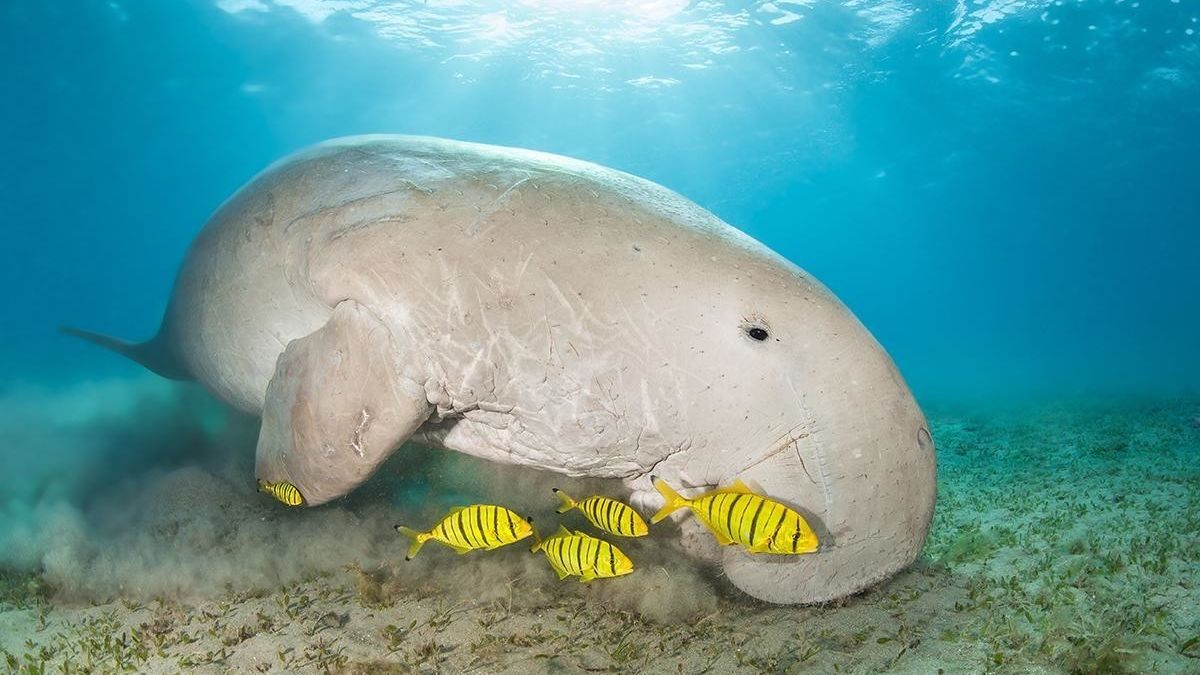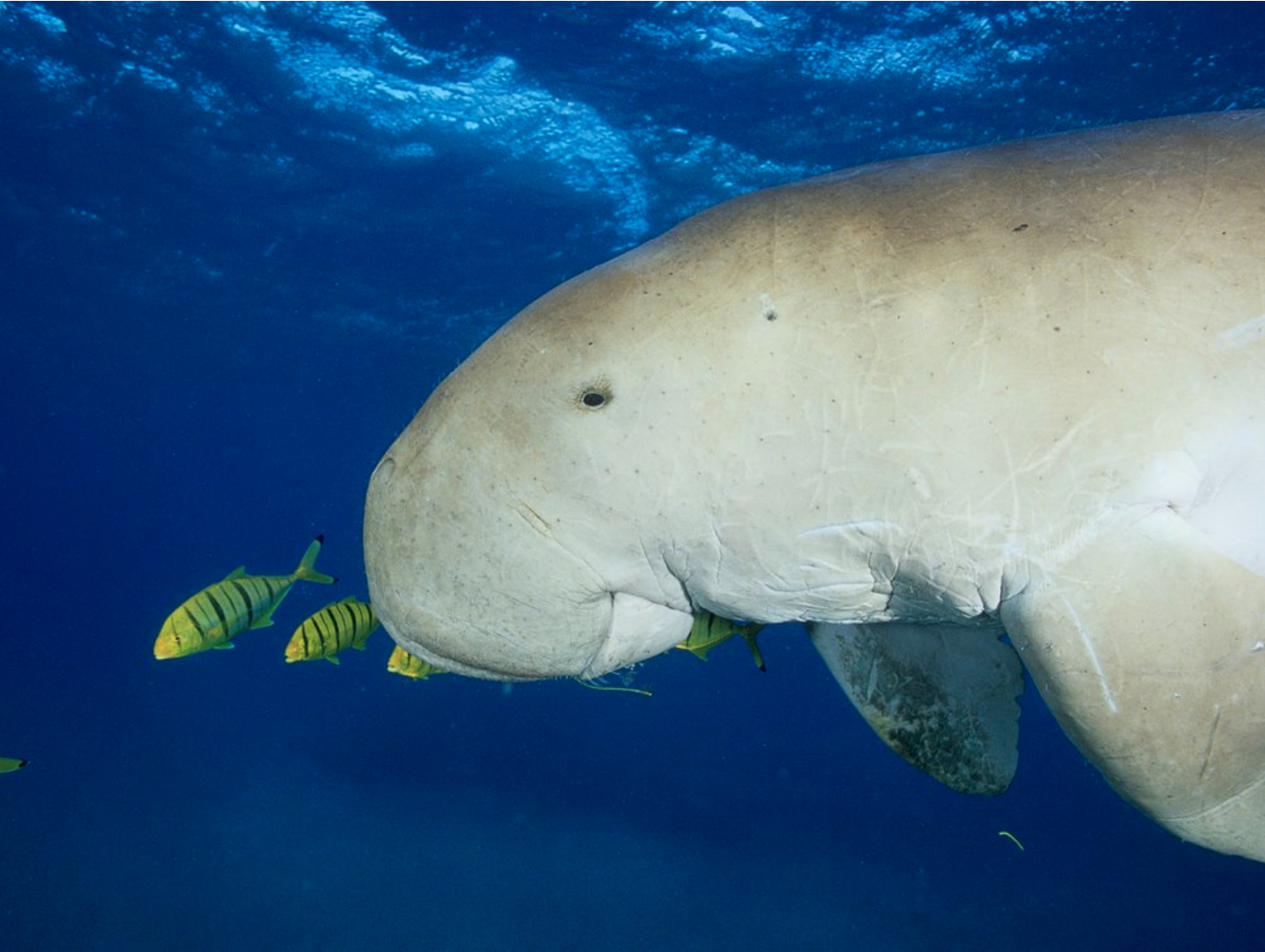Dugongs of the Whitsundays

Dugongs are often spotted in particular bays around the Whitsunday Islands. They are here in numbers but they avoid boats and people. As they have been a popular target for the indigenous tribes over the years, it is thought they have a healthy knowledge of how to avoid humans. Recently many of our passengers and Whitsundays staff have reported frequent sightings. Several less visited bays such as Mackeral bay and Double Bay have been hideouts for these beautiful creatures.
The main habitat is in grassy sea beds in shallow water. Other areas where sailing vessels have spotted Dugongs include Tongue Bay, Cid Harbour (Whitsunday Island), Repulse Bay, Muddy Bay and Shute Harbour (mainland). The dugong also known as the sea cow is a large herbivorous marine mammal. The name sea cow comes from the fact that they graze on sea grass.
Adult Dugongs can reach lengths of more than 3 meters. Dugongs have relatively poor eyesight, so rely on the sensitive bristles covering the upper lip of their large snouts to find and grasp seagrass. Cows and calves communicate by producing chirps.

Dugongs date back 5000 years ago from paintings found in caves in Malaysia. There has also been references made to sea cows in the bible.
It has also been said that the myth of the mermaid was created from Mariners mistaking dugongs for an aquatic female. When seen from above the top half of a Dugong can appear like a human woman.
The dugong is currently an endangered species and population has declined somewhat over the years.
Dugong feed almost exclusively on seagrass, a flowering plant found in shallow water areas. An adult will eat about 30 kilograms of seagrass each day.
Dugong may live for 70 years or more and are slow breeders. The female dugong does not begin breeding until she is 10-17 years old, and only calves once every three to five years, providing seagrass and other conditions are suitable. Dugongs are also under serious threat on the Great Barrier Reef. Dugong sanctuaries or dugong protection areas have been established in Edgecumbe Bay and Repulse Bay.












